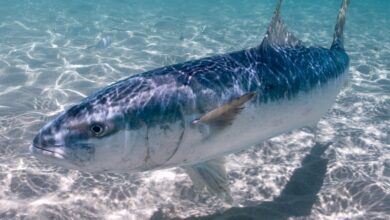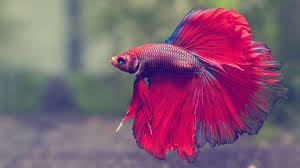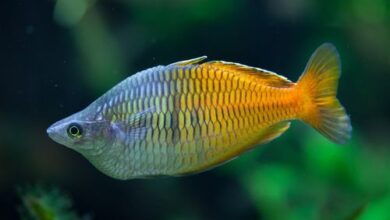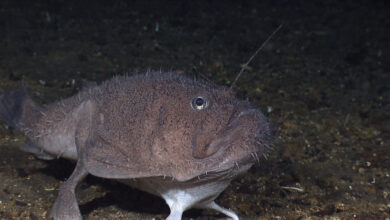Everything You Need to Know About Basa Fish-Basa Fish

FAQs About Basa Fish
FAQ: Is basa fish a good fish to eat?
Yes, basa is considered an excellent choice for health and sustainability. It provides a lean source of high-quality protein and essential nutrients without mercury or PCB concerns often associated with other predatory fish. Basa farming is also well-regulated, with responsible producers implementing strict standards for fish welfare, environmental protection, and traceability. When sourced from certified sustainable farms, basa offers one of the best options for consumers looking to feel good about the seafood on their plate.
FAQ: What is basa fish called in the UK?
In the United Kingdom, basa fish is called swai or Vietnamese catfish. This helps distinguish it from other types of catfish that may be more commonly found in British waters. The terms swai and basa can be used interchangeably in the UK to refer to the same farmed freshwater species from Southeast Asia.
FAQ: Is basa better than catfish?
While similar in appearance, basa has some advantages over traditional North American catfish. Basa is lower in fat and calories, containing only about 1.5g of fat per 100g serving compared to 7g in farm-raised catfish. It also offers more omega-3 fatty acids, which are beneficial for heart and brain health. Like catfish, basa has a mild flavor that takes well to bold seasonings. Overall, basa is considered one of the more sustainable and healthier options when compared nutritionally to domestic catfish varieties.
FAQ: Which fish is better, basa or tilapia?
Both basa and tilapia are affordable, mild-flavored freshwater fish farmed on a large scale. Nutritionally, basa and tilapia are quite similar – both are low in overall fat and calories but high in protein. The main difference is that basa provides slightly more omega-3s per serving, along with more niacin and B12. Tilapia contains a modestly higher amount of phosphorus. Overall, both fish offer nutrition and sustainability benefits. For those seeking a bit more omega-3 intake, basa has a slight edge, but tilapia remains an equally healthy and budget-friendly choice.
FAQ: Is basa better than salmon?
While salmon is higher in omega-3 fatty acids than basa, basa still provides a significant amount at 338mg per 100g serving. The main tradeoff with salmon is its higher price point, calories (230cal per 100g vs 101cal), and fat content (8g vs 1.5g). Both salmon and basa serve as great sources of protein and B vitamins. Unless calorie or fat intake needs to be tightly controlled, basa is the more economical pick compared to salmon while still supporting health with its nutrition profile. Fish makes a nutritious addition to your plate regularly, depending on your individual needs and dietary preferences.
Basa fish is a freshwater fish that has become increasingly popular around the world in recent decades. As the demand for fish has grown, basa farming has expanded to meet consumer needs in a sustainable way.
Basa Fish Origin
Basa, also known as swai or Vietnamese catfish, belongs to the family Pangasiidae. Native to the Mekong River basin of Southeast Asia, the two main species of basa farmed are the striped catfish (Pangasius hypophthalmus) and the Sutchi catfish (Pangasianodon hypophthalamus). Basa farming began in Vietnam in the 1980s and has since grown into a multi-billion dollar industry, making Vietnam one of the top exporters of basa worldwide. Other basa farming now also occurs in countries like Cambodia, Indonesia, and Thailand.
Through selective breeding, basa has been developed into a hardy and efficient source of protein for cultivation. They withstand a wide range of temperatures and water qualities, growing quickly to market size on balanced diets. The conditions of basa aquaculture have also improved over time, with responsible farmers implementing strict standards for fish welfare and environmental protection. Overall, basa is considered one of the most sustainable and eco-friendly sources of seafood globally.
Basa Fish Size
At the market, most basa available will be approximately 300-500g in size. However, mature adult basa in the wild can reach over 1m in length and weigh upwards of 35kg! Through selective breeding, farmed basa has been developed to reach harvest size within 6-9 months, which is ideal for commercial production.
Within slaughter weight parameters, there is some size variability depending on the specific market. For example, basa exported to European and American markets often average 400-500g for individual fillets. Meanwhile, basa being sold fresh within Asia may run a bit smaller at 300-400g on average. No matter the size, basa fillets are lean white fish with a mild flavor profile enjoyed by people of all ages.
Basa Fish Price
The average retail price of basa in Australian supermarkets ranges from $10-15/kg. However, there can be some fluctuations depending on supply and demand factors. For example, basa may be discounted slightly during peak seasons when supply is highest. Conversely, prices may creep up marginally if demand outstrips supply at certain times of the year.
Compared to other popular seafood choices in Australia, basa usually offers an affordable option. At around $10-15/kg, basa is often cheaper than salmon, swordfish, or barramundi. It also provides excellent value when measured by protein per dollar. For context, the price of basa is on par with other affordable white fish like NZ Hoki or Atlantic cod. Overall, its mild taste and high protein content make basa a budget-friendly choice for Australian families.
Basa Fish Nutrition
Basa is an exceptionally healthy protein source, low in calories and fat but high in crucial nutrients. A typical 100g serving contains:
- Calories: 101kcal
- Protein: 22g
- Fat: 1.5g
- Omega-3 fatty acids: 338mg
- Vitamin B12: 4.1mcg (68% DV)
- Phosphorus: 294mg (29% DV)
- Selenium: 27.6mcg (50% DV)
- Niacin: 6.9mg (34% DV)
As you can see, basa provides a wealth of nutrients in just a modest serving. With over 20g of high-quality protein per 100g, it satisfies hunger and aids muscle recovery. Its lean profile means only 1.5g of total fat, mainly in heart-healthy unsaturated fats. Basa is also an excellent source of omega-3s, which are important for brain and heart health. Plus, it covers nearly 70% of daily vitamin B12 needs in a single serving. Overall, basa offers a nutrition punch that supports wellness from the inside out.
Basa Fish Recipe
Now that we’ve covered the basics of basa fish let’s explore some delicious recipes to try at home. Here is a simple yet satisfying way to prepare your fillets:
Baked Basa with Lemon and Herbs
Ingredients:
- 4 (150g) basa fillets
- 2 tbsp olive oil
- 1 lemon, juiced and zested
- 2 cloves garlic, minced
- 1 tbsp mixed fresh herbs (rosemary, thyme, oregano)
- Salt and pepper to taste
- Lemon wedges for serving
Instructions:
- Preheat oven to 200°C and line a baking sheet with parchment paper. Place fillets on the prepared sheet.
- In a small bowl, whisk together olive oil, lemon juice and zest, garlic, and fresh herbs. Season with salt and pepper.
- Brush herb mixture generously over both sides of each fillet.
- Bake for 12-15 minutes, until fish is opaque and flakes easily with a fork.
- Serve warm with extra lemon wedges for squeezing over the top. Enjoy!
This classic preparation allows the mild flavor of basa to really shine through. Feel free to vary the fresh herbs based on what’s available. Try rosemary-thyme or a Mediterranean mint-oregano blend next time.




